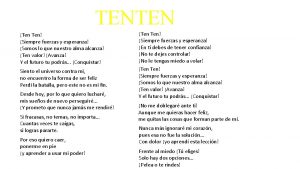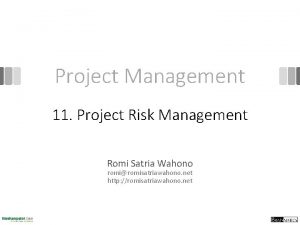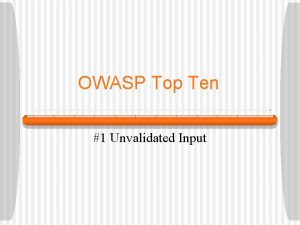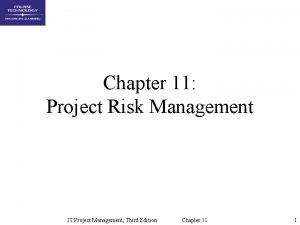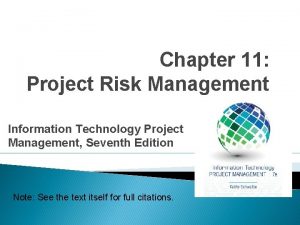Learning at Home with Top Ten Mathematics a









- Slides: 9

Learning at Home with Top Ten Mathematics a Remote Learning for Year 1 Subtraction Squish

Key Premise and Summary of the Task Subtraction Squish Teacher Guide Year 1 Students consolidate subtraction using concrete materials and visual models by squishing Play-Doh in counting frames. The frames reinforce the starting number in subtraction problems. This then leads towards the counting back strategy, as well as the drawing strategy, building on students’ first experiences of subtraction during the Foundation year. Remote Learning Pedagogy and Recommended Strategies: • Encourage students to take a short video of themselves squishing the Play -Doh and saying the subtraction sentence during the video: “ 5 take away 3 leaves 2!” • Encourage students to record using the provided template and to scan or take a photograph of their completed work. Top Ten Mathematics

Victorian Curriculum Content Descriptors and Elaborations Year 1 – Number and Algebra – Number and Place Value: Subtraction Squish Teacher Guide Year 1 Represent and solve simple addition and subtraction problems using a range of strategies including counting on, partitioning and rearranging parts (VCMNA 089): • developing a range of mental strategies for addition and subtraction problems. Learning outcomes that this task works towards: • Students visualise a part that has been taken away from the whole (starting number), acting this out and representing it using drawings, words and number sentences. • Students make reasonable estimates about how many will remain. • Students develop increasing fluency with the counting back sequence, as well as subtractions from single-digit numbers. Top Ten Mathematics

Subtraction Squish Teacher Guide Year 1 Proficiencies in this task: • Understanding: Students connect the skill of subitising to subtraction by visualising removing the items that they are about to squish and aiming to see (with their subitising superhero eyes) how many will remain. Students also connect the concept of one-to-one counting and the backwards counting sequence to the subtraction concept. • Fluency: Students make reasonable estimates about how many will remain before engaging in the process of squishing to see the result, receiving immediate feedback on their estimate. • Reasoning: Students describe the subtraction process using mathematical language, including ‘take away’ and ‘leaves, ’ as well as the abstract symbols that represent these (‘-’ and ‘=’). Top Ten Mathematics

Subtraction Squish Learning Intention: Figure out the answer to a take away (subtraction) problem by seeing what will be left using your maths superhero eyes. Also try to figure it out by counting back. Record using words, a number sentence and the drawing strategy. Materials for the task: • Play-Doh. • Counting frames. • Recording template. Top Ten Mathematics

Instructions 1. Start with 3 balls. Roll Play. Doh up into balls. Do you know what balls are called in 3 D shape language? Spheres! Say the word spheres 3 times. 2. Place the balls into the counting frame for number 3. Now choose how many to squish. 3. Before you squish, estimate (make a thinking guess) about how many balls will be left. Use your maths superhero eyes, imagining the squished balls, and try to see how many will remain.

Counting back strategy Before you squish, try to count back in your head to figure out the answer. For example, the problem is 7 take away 2. Start with 7 in your head. Put up 2 fingers. Now count back by 2 as you drop each finger down: “ 6” (one finger down), “ 5” (final finger down)! 5 is your answer. Your fingers help you remember how many to take away (how many times to count backwards until you reach the answer). Top Ten Mathematics

Instructions 4. Now squish! 5. Record what happened. For example, if you started with 3 and squished 2, say, “I started with 3, I squished 2, 1 is left!” Write this down on the recording template: “ 3 take away 2 leaves 1. ” 6. Also record it as a number sentence: 3 – 2 = 1 7. Finally, record it as a drawing: Top Ten Mathematics

Support options (how to make the task easier at first): Focus on taking away from 3, 4 and 5, practising these starting numbers each day, before progressing any higher. Support and Extension Versions Focus on taking away one at a time. For example, start with 3, take away 1. Then restart with 3, take away 2. Then restart with 3, take away 3. This builds the pattern for students and also lays foundations for the counting back strategy. Extension options (how to make the task more challenging): Start by taking away from 10, 11 or 12. Arrange the number so it is easy to see, for example, 12 as 3 groups of 4, then take away 5 (crushing 1 group of 4 and another 1). Since 12 take away 4 leaves 8, 12 take away 5 will be 7. Use backwards skip-counting as a strategy too. For example, for 20 take away 6, count back by twos: 18, 16, 14! Use addition to help you. For example, for 12 take away 8, if you know 8 and 4 makes 12, you also know that 12 take away 8 will be 4. If you need to, you can count on from the number you are taking away, up to the starting number. For example, for 12 – 8, start at 8 and count 9, 10, 11, 12 (as you put each finger up). Since you counted 4 times (and put 4 fingers up), the difference is 4! Top Ten Mathematics


